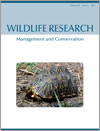Context. The primary selective forces responsible for shaping life-history traits come from the physical and biological environment in which a species resides. Consequently, the limits of a species range may provide a useful measure of adaptive potential to environmental change. The proximity of foraging grounds to terrestrial nursing habitat constrains central-place foragers such as otariid seals in selecting breeding locations. The Australian sea lion (Neophoca cinerea) is an endangered otariid endemic to Australia, whose northern-range extent occurs at a temperate–tropical transition zone on the western coast of Western Australia (WA).
Aims. Currently, there is a complete absence of data on the foraging ecology of Australian sea lions in WA. We sought to address this critical knowledge gap and provide data on the foraging ecology of adult female Australian sea lions at three isolated breeding colonies in western WA.
Methods. We used stable-isotope ratios of carbon (δ13C) and nitrogen (δ15N) in the whiskers of pups as proxies to characterise feeding behaviour of 10–28% of all adult female Australian sea lions at each colony. We then compared these geographic data to (1) conspecifics at similar latitude in South Australia (SA) and (2) isotopic data collated from other studies on seabirds that inhabit the region, to place foraging behaviour of adult female Australian sea lions into context.
Key results. At the southernmost colonies in WA, individual animals were members of one of two distinct isotopic clusters that could be described by differences in δ15N and δ13C values. Individuals at the northernmost colony displayed δ15N values similar to those of seabirds in the same region. Across the study, isotope ratios of adult female Australian sea lions in western WA were between 3‰ and 5‰ lower than those observed at a colony at similar latitude in SA.
Conclusions. Gross differences in the physical oceanography between WA and SA may in part explain the differences in isotope ratios of individuals between the regions, with lower δ15N and δ13C values in WA probably reflecting the relatively depauperate conditions of the Leeuwin Current.
Implications. Potential regional differences in trophic structure should be considered when developing appropriate management plans for Australian sea lions and regional variation in the diet of Australian sea lion warrants further investigation.





